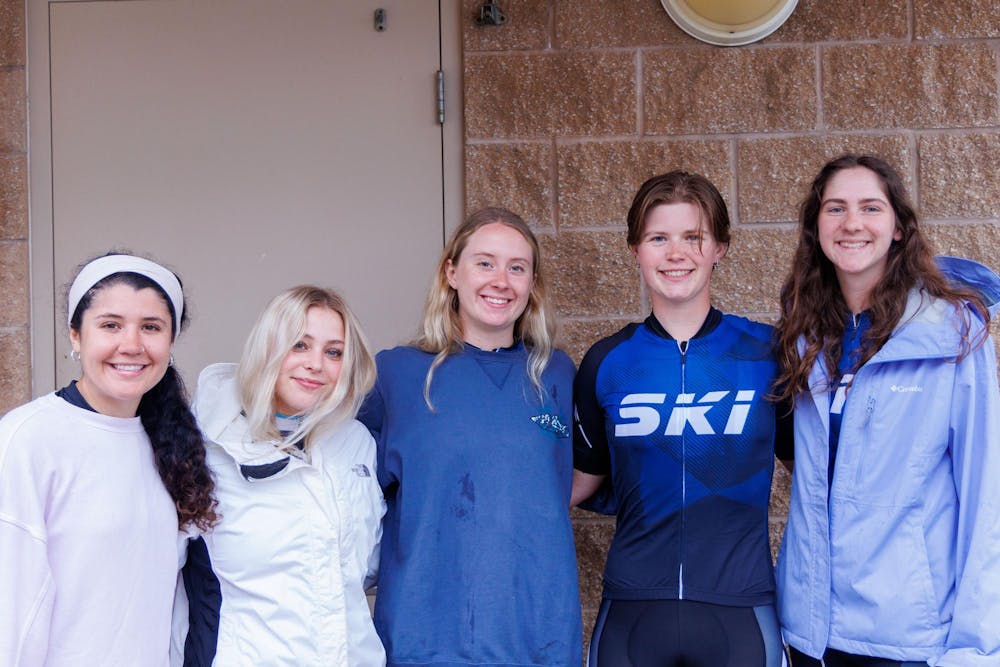For the first time since 2014, a complete field of 33 teams will line up for the 36th running of the women’s Little 500. After a decade of fragmented fields, the maximum number of allowed teams qualified for the race April 19.
SKI Cycling, a steady force since its inception, anticipates its months of practice paying off on the big day. The independent team has finished in the top 10 every year since it started competing in 2014, and its consistency is reflected in its training.
“In the beginning, the fall is all about endurance and really long rides to build that base,” senior Tori Woolbright said. “On the weekends, we’ll be doing like four-to-five-hour rides which will be pretty long, and then moving a little bit into late fall and early winter we start moving into really structured workouts, so intervals and sprints.”
At its peak, the team was riding anywhere from 300 to 500 miles per month and averaging 100 to 120 miles per week. For riders like Woolbright, a former high school runner, and fellow senior and captain Melissa Deming, a longtime competitive swimmer, the adjustment was challenging but their athletic backgrounds proved helpful.
“Having awareness of your own ability and especially your ability over a long period of time is important because we’ll do long bike rides and that kind of stuff in the fall,” Deming said. “Whereas if you haven't done a lot of endurance or something where you’re just doing the same repetitive task over and over, it’s hard.”
After months of building up stamina, the team takes a training trip the first week of January for a change of scenery before settling into the grueling winter months of indoor practice.
“We’ll drive to all sorts of places, like this year we went to South Carolina for a weeklong training trip, and that’s just time we’re all together doing bike riding,” Deming said. “That’s literally all it is and that’s really fun.”
The second semester of the school year marks a turning point in their training. Upon coming back to Bloomington, SKI practices inside on rollers and transitions to using designated Little 500 bikes.
Unlike the road bikes used throughout the fall that are often customized to riders and equipped with multiple gears, the bikes used in the race are uniform with a single gear.
“It’s almost like taking on a different sport, even though it’s still a bike and it’s still the same thing, it’s just a whole different riding style,” Deming said.
In late February, the team takes to the track to start practicing more technical elements. SKI has approximately four workouts on the track per week, with the times of the workouts adhering to the riders’ individual schedules.
“Going to the track definitely feels more applied to what we’ve been training for all year because the sets that we do on the track are really focused on race scenarios,” Woolbright said. “It’s fun, but there’s definitely more intensity to it all; you have to be more intentional with what you do and who’s around you.”
In addition to their track workouts, the group also meets up on the weekends for a recovery ride. The long ride is a welcome break after several practices focused on intervals and sprinting.
The mental component of training is not to be overlooked by veteran riders who understand the complexities of the demanding 100-lap race.
“This year, even off the bike, I think the mental training of it is really big,” Woolbright said. “Going into my rookie year, you don't know what to expect with the race, and I went into my first race being like, ‘Oh, I've trained nine months, how hard can this race be,’ and it’s pretty difficult because it’s really high intensity.”
For captain Deming, watching the team improve throughout the season has remained a point of pride as she rounds out her Little 500 career.
“It has just been really cool to watch all of the time and dedication that we put in finally have tangible results,” Deming said. “Like you can see the time drops, the differences or how much more comfortable somebody is on a bike.”
With this year’s race set to showcase the most female riders in a decade, SKI looks forward to taking part in the historic Hoosier weekend after months of preparation.
“I think it’s a super cool tradition that anyone who is tied to IU talks about, and so it’s really cool after the race to be like, ‘I did that, I did the big thing that everyone talks about at IU,’” Woolbright said. “I think finding purpose outside of training to win is definitely a good way to go into it.”




